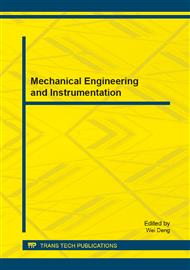[1]
Zhang Zengting. Metal diaphragm for positive expulsion tanks numerical simulation and experimental verification of diaphragm [J]. Rocket propellence, 35 (3) , 2009: 26-29.
Google Scholar
[2]
Zhou Shiming, Yuan Jiehong. Numerical simulation of metal diaphragm for positive expulsion tanks deformation and failure analysis [J]. Shanghai aerospace, 2005 (6): 13-16.
Google Scholar
[3]
M Marvin, H Kammerer, J T Gidley. Parametric evaluation of contoured aluminum diaphragm positive expulsion tanks[A]. 28th AIAA/SAE/ASME/ASEE Joint propulsion conference and exhibit July 6-8, 1992/Nashville, TN.
DOI: 10.2514/6.1992-3186
Google Scholar
[4]
H Kammerer, J Hughes, E Gribben. Analytical & material advances in contoured metal diaphragms for positive expulsion tanks[A]. 31st AIAA/SAE/ASME/ASEE Joint propulsion conference and exhibit July 10-12, 1995/San Diego, CA.
DOI: 10.2514/6.1995-2354
Google Scholar
[5]
Zhu Zhichun, Zhao Heming, Luo. Deformation analysis of metal diaphragm for positive expulsion tanks [J]. Propulsion technology, 1999, 20 (5): 77-79.
Google Scholar
[6]
Su Xu Ming et al. (1990), Postbuckling and Imperfection Sensitivity Analysis of Structures in the Plastic Range [J]. Part 1: Model Analysis [J]. Thin- Walled Structures, 10: 263 - 275.
DOI: 10.1016/0263-8231(90)90068-a
Google Scholar
[7]
Zhou Chengti (1979). Elasto-plastic stability of thin shell theory [M], Defense Industry Press.
Google Scholar
[8]
Qian Jihong , thin shell instability mechanism of [J], Journal of Computational Mechanics , 20 (3), 2003: 366-371.
Google Scholar
[9]
Allman DJ. A basic flat facet finite element for the analysis of general shells [J]. Int.J. Numer. Methods Eng., 1994, 37 (1):, 19-35.
DOI: 10.1002/nme.1620370103
Google Scholar
[10]
Zhu zhihua, Hu Xiaoping, Chen Xianglin. Finite element analysis of the overturning process of titanium diaphragm for propellant tank[J]. Journal of Rocket Propulsion. 2007, 8: 33-35.
Google Scholar
[11]
Zhou Xingxing, Yuan Jiehong, Zhou Shiming. Ring-stiffened cylindrical metal deformation numerical simulation and failure analysis [J]. Strength and environment, 2007, 34 (6): 16-21.
Google Scholar


